Abstract
Relative water content, solute concentrations, and osmolality were determined in the water storage tissue (hydrenchyma) and the assimilatory tissue (chlorenchyma) of the succulent leaves of Peperomia magnoliaefolia (Jac) (Piperaceae) during slow desiccation. Relative water loss was significantly greater for the hydrenchyma than for the chlorenchyma. When whole leaves had lost 50% of their initial water content, the concomitant decrease of the relative water content of the hydrenchyma was 75 to 85%, but of the chlorenchyma only 15 to 25%. In spite of this differential water loss, the osmolality in both tissues increased to the same extent, indicating solute flow from the hydrenchyma to the chlorenchyma during desiccation. Solute translocation appeared to be unspecific, probably reflecting symplastic mass flow from one tissue to the other. The observed volume preservation of the chlorenchyma stabilized photosynthesis of Peperomia magnoliaefolia (Jac) leaves, which was less inhibited by a given decrease of the relative water content of the whole leaves than in nonsucculent leaves.
Full text
PDF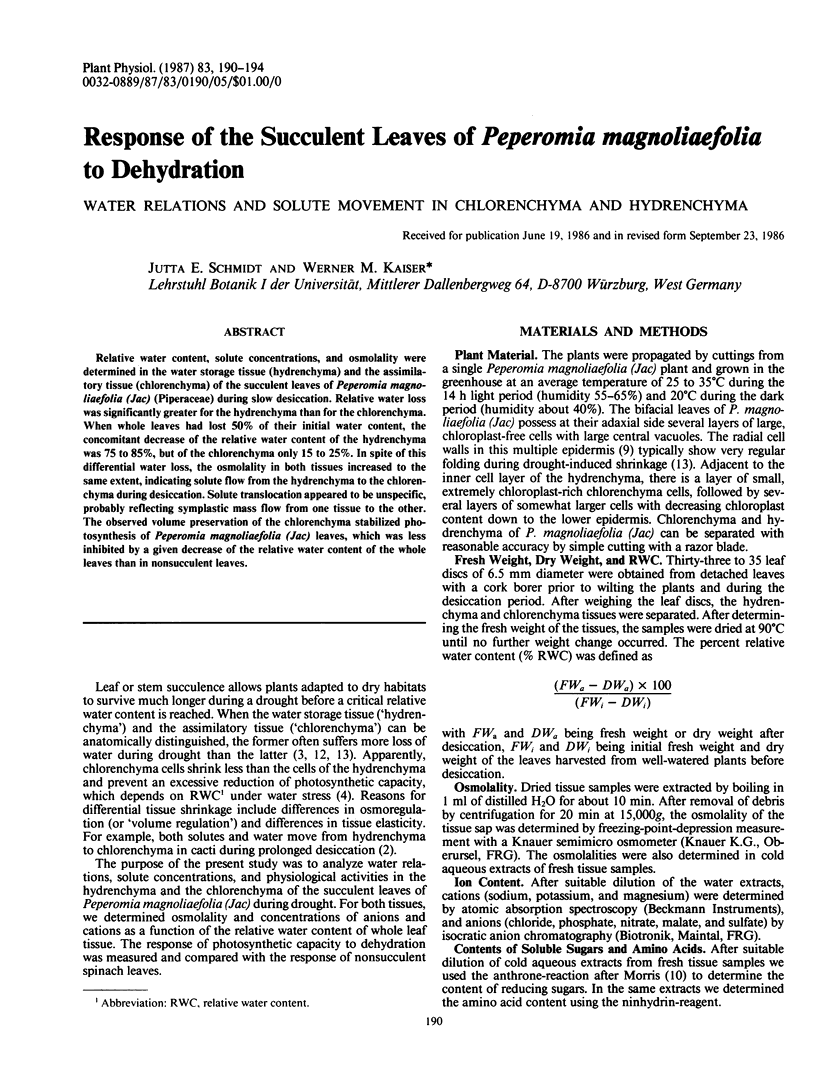
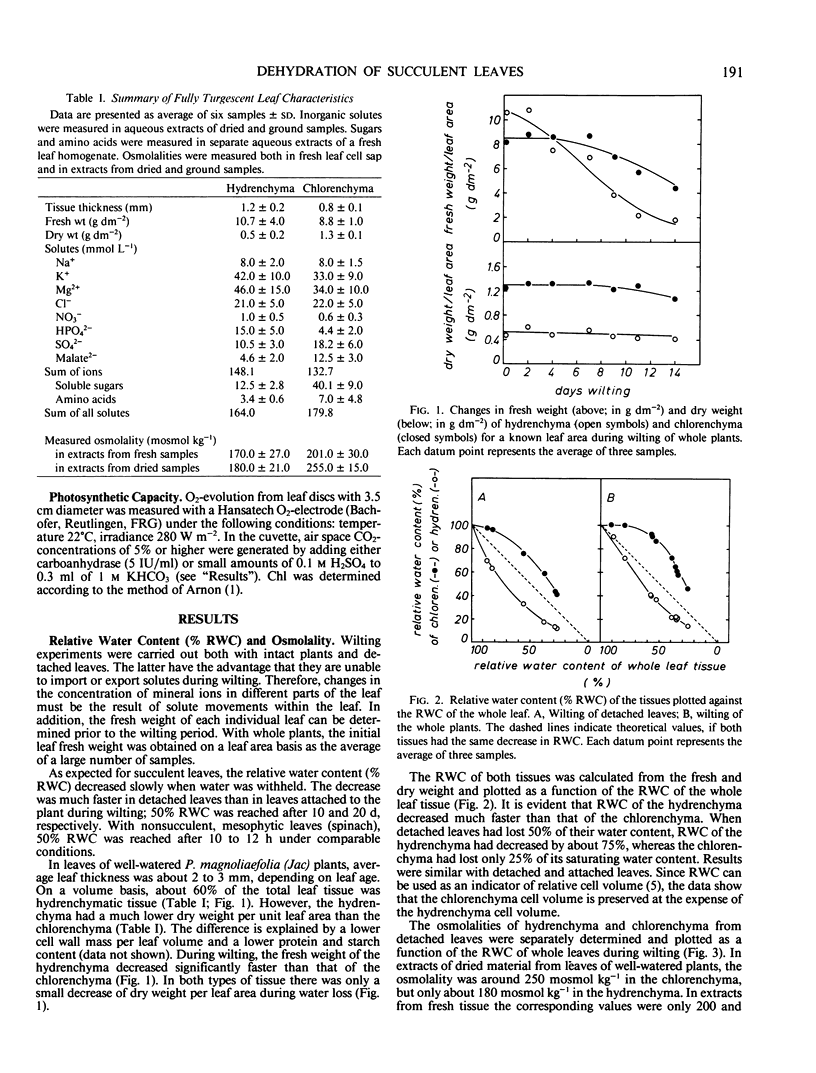
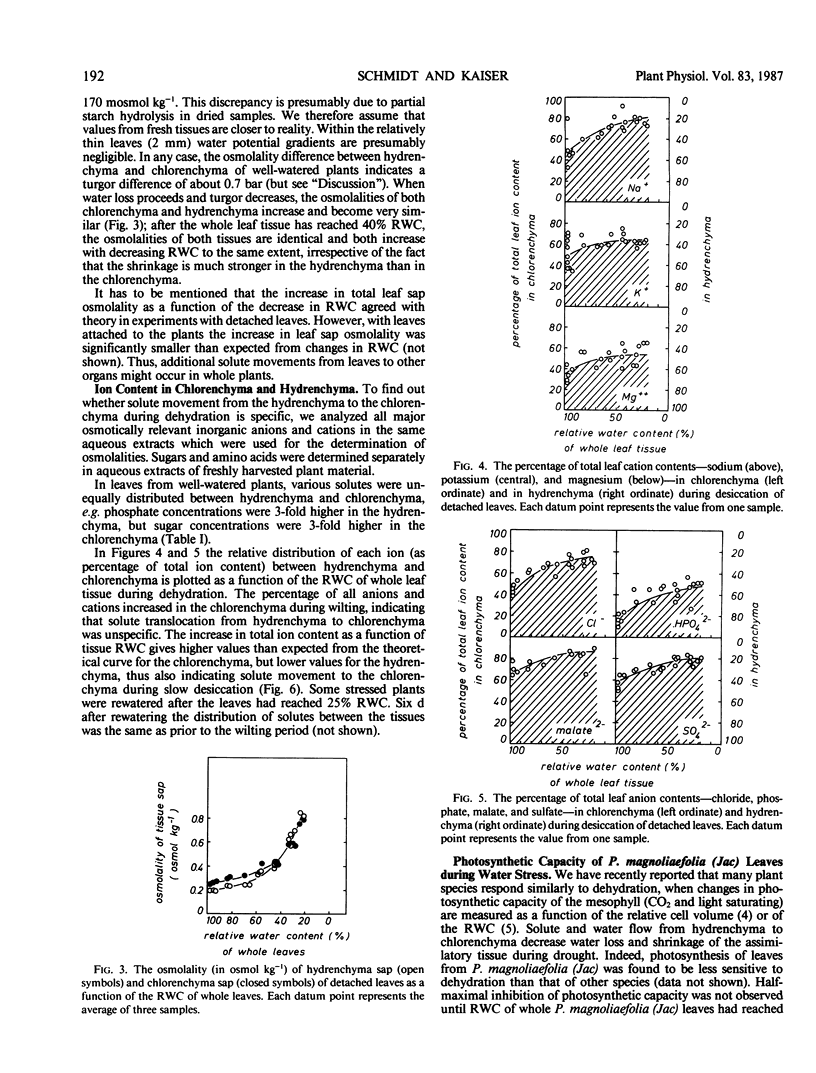
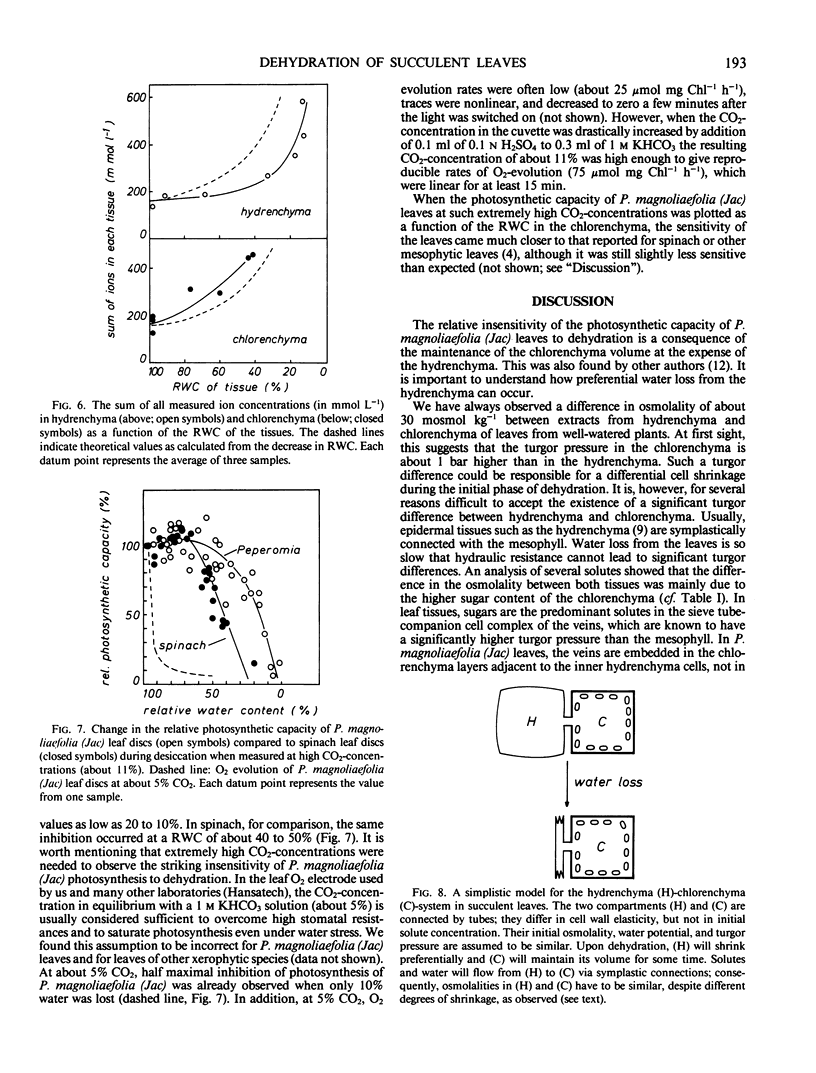
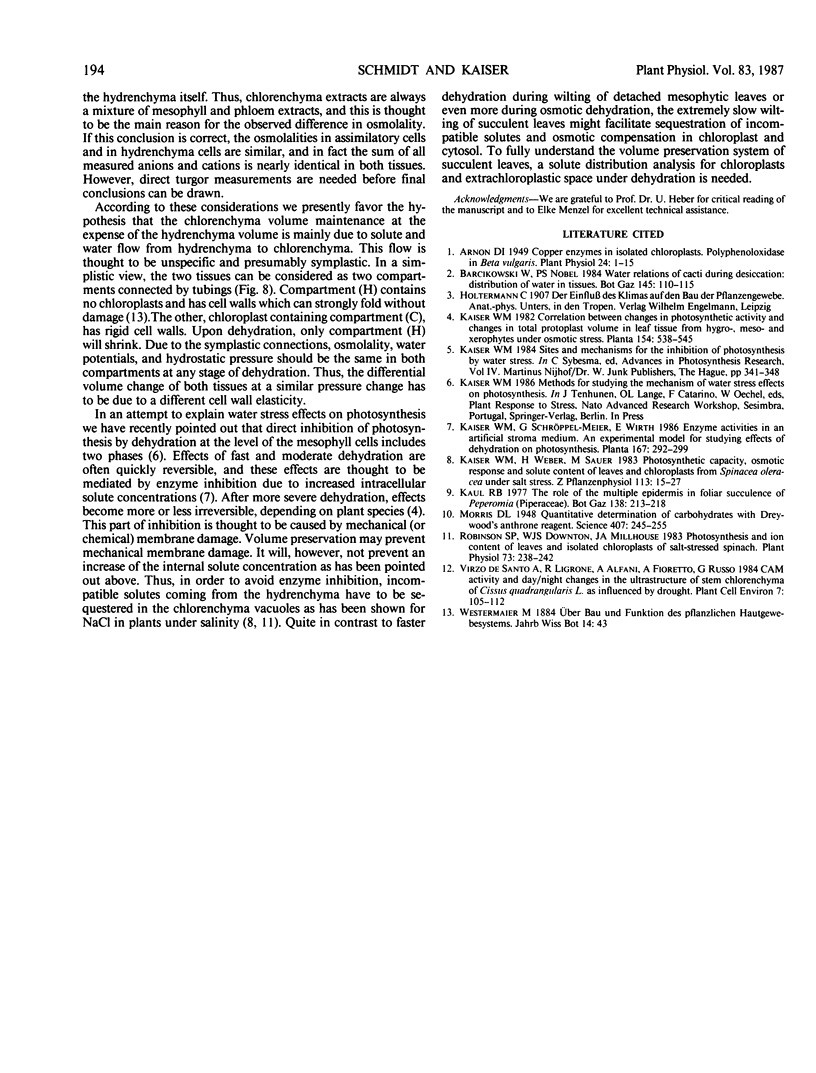
Selected References
These references are in PubMed. This may not be the complete list of references from this article.
- Arnon D. I. COPPER ENZYMES IN ISOLATED CHLOROPLASTS. POLYPHENOLOXIDASE IN BETA VULGARIS. Plant Physiol. 1949 Jan;24(1):1–15. doi: 10.1104/pp.24.1.1. [DOI] [PMC free article] [PubMed] [Google Scholar]
- Morris D. L. Quantitative Determination of Carbohydrates With Dreywood's Anthrone Reagent. Science. 1948 Mar 5;107(2775):254–255. doi: 10.1126/science.107.2775.254. [DOI] [PubMed] [Google Scholar]
- Robinson S. P., Downton W. J., Millhouse J. A. Photosynthesis and ion content of leaves and isolated chloroplasts of salt-stressed spinach. Plant Physiol. 1983 Oct;73(2):238–242. doi: 10.1104/pp.73.2.238. [DOI] [PMC free article] [PubMed] [Google Scholar]


